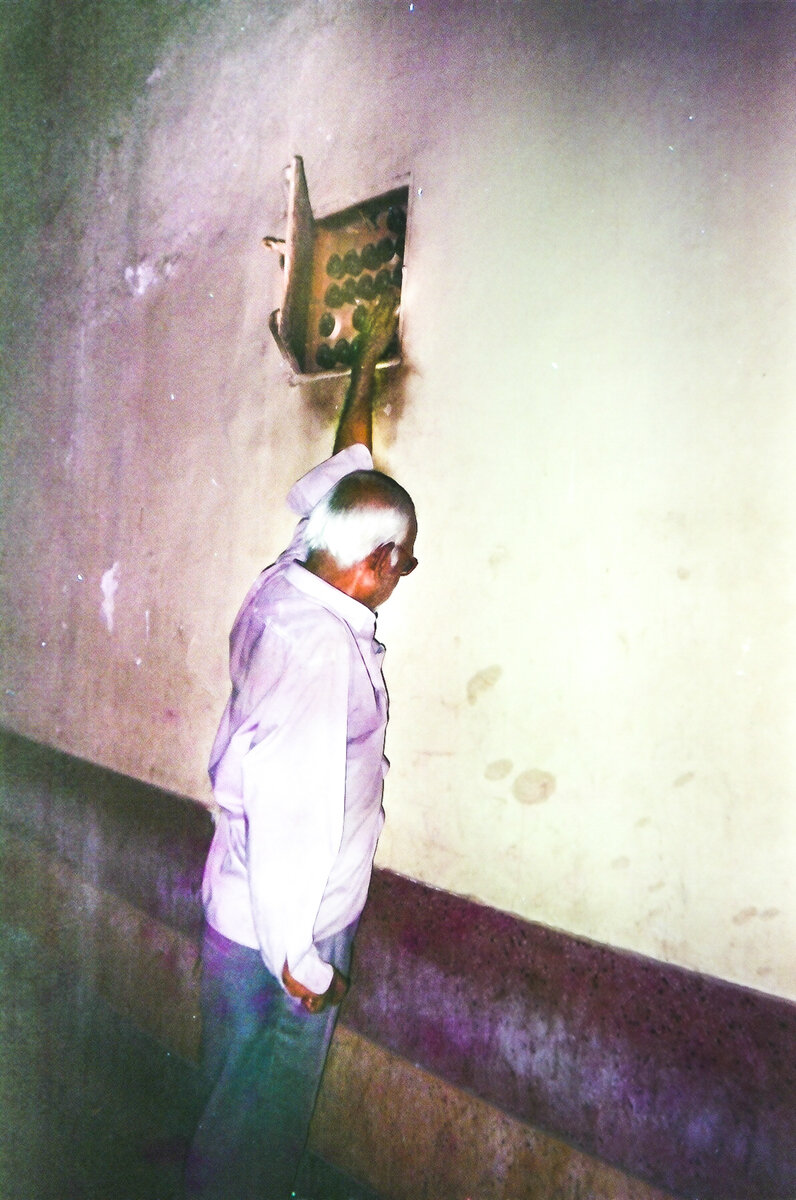Ashfika Rahman: The Last Audience
By Summer Myatt
The Centurion Cinema Hall in Old Dhaka, Bangladesh is a gleaming, grimy palace falling into gentle ruin. Once a fluttering, lively epicenter of entertainment, the humble single screen cinema hall is long past its prime. The walls are chipped and covered in rust stains, spools of film decorate unswept piles of debris and garbage, and decades-old theater equipment whirrs on dutifully. However, the cinema hall’s ever-loyal patrons still cling to a glorious, picturesque past despite the new, less palatable reputation Centurion has earned of being a hub for drugs and prostitution. Ashfika Rahman, a young Bangladeshi photographer and artist, honored and immortalized her own fond memories of this eroding cultural gem in her series, aptly titled The Last Audience.
Though captured just last year, Rahman’s The Last Audience looks like something you’d find in an old family photo album in the attic. Bright, overexposed fuchsias, faded emerald greens, and the shimmering beige of crushed velvet shine through expired film, setting an atmosphere of simultaneous decay and brilliance. There’s a unique combination of intimacy and anonymity in going to see a movie in a theater — in being still and surrounded by strangers for hours at a time — that Rahman brilliantly harnesses in these photos.
This ambiguity and namelessness is especially underscored in an image from the series in which a man, cigarette held tight between his lips, reaches toward a bodiless hand holding his cinema ticket. Reminiscent of Michelangelo’s The Creation of Adam, the two hands float in midair, their fleeting connection imminent. The photographer’s finger concealing the top corner of the frame, Rahman inserts herself into the narrative, as if she was merely a bystander and fellow patron.
In another image, a woman lounges in a faded theater seat, her bare foot propped up on the row in front of her, her long black hair draped comfortably over the chair back. The stark flash from the camera against the pitch black of the theater feels almost too revealing, as if exposing a moment in time meant to be lived and not captured. Yet another photo reveals a bird sitting perched on the back of a glossy red theater seat, the solitary being in attendance. The film grainy and scratched, the image appears as if the cinema hall has been abandoned for years.
But there’s still a faintly sparkling spirit in the dilapidated building; Rahman’s series serves as a heartfelt ode to “these ancient premises, where life is silent, suspended, with an unheard story remaining in all of its corners.”
An artist primarily working with the medium of classical dance, Rahman brings a sense of movement and freshness to her work through the manipulation of material and color in her images. She also uses photography to express her views on complex social issues. One of her latest projects, Rape is Political, is a portrait series depicting tribal rape victims in the remote hills of Bangladesh. Through her work, Rahman aims to lend a platform and bring awareness to those who have been victims of social injustices.
See more of this series or Rahman’s other work here.











